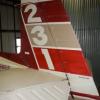Night flights and runway lights.
-
Members Online
- kortopates
- S50D
- NickG
- Skates97
- AJ88V
- EricJ
- KSMooniac
- Ibra
- MikeOH
- LANCECASPER
- 1967 427
- 201er
- NicholasM20
- hammdo
- theoriginalturk
- bluehighwayflyer
- Becca
- DustinS
- Mreed420
- Fritz1
- varlajo
- mooniac58
- VetRepp
- Cody Stallings
- Dammit Bill
- 201Mooniac
- Zikeli5
- exM20K
- dzeleski
- haymak3r
- Brandt
- eman1200
- Peter T
- pirate


Recommended Posts
Join the conversation
You can post now and register later. If you have an account, sign in now to post with your account.